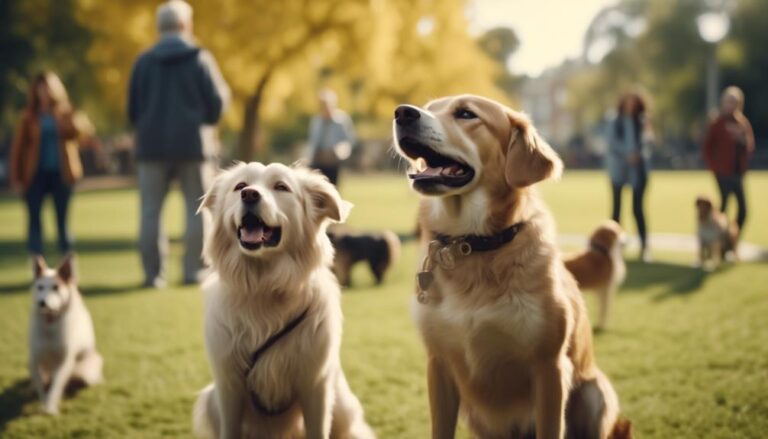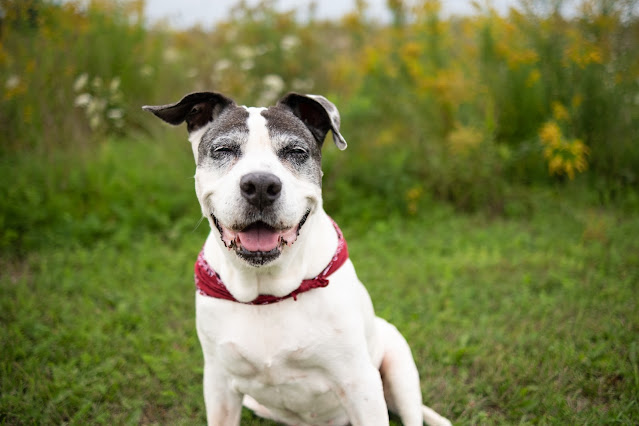Can Shyness In Dogs Be Cured

Can Shyness In Dogs Be Cured: Like a timid bird perched on the edge of its nest, shyness in dogs can be a complex and delicate issue to address. You may wonder, can this apprehensive nature be cured? Well, buckle up as we embark on a journey to unravel the secrets behind overcoming shyness in our canine companions. From understanding the root causes to implementing effective training techniques, we’ll explore how building confidence through socialization and creating a safe environment can make a world of difference for your shy pup. But, is there more to this story? Can shyness truly be conquered? Stick around, and you might just find the answer you’ve been searching for.
Understanding Shyness in Dogs
Understanding shyness in dogs is crucial for effectively addressing their behavior and helping them overcome their fears. Shyness in dogs can stem from various factors, such as genetic predisposition, lack of socialization, abuse, or trauma. It is important to recognize the signs of shyness in dogs, which include avoiding social interactions, hiding, trembling, excessive licking, and fear-related aggression.
To help shy dogs become more confident and comfortable in social situations, it is essential to understand the underlying causes of their shyness. Genetic predisposition can make certain dogs more prone to shyness, while a lack of socialization during their formative years can result in fear and anxiety around unfamiliar people or environments. Dogs that have experienced abuse or trauma may also exhibit shyness as a defense mechanism.
To help shy dogs overcome their fears, it is important to provide a safe space where they feel secure. This can be a designated area in the home where they can retreat to when they feel overwhelmed. Additionally, positive associations with socialization can be established through treats and rewards. Gradual exposure to new people, animals, and environments, along with positive reinforcement, can help shy dogs gain confidence and become more comfortable in various situations.
Seeking professional help from a qualified dog trainer or behaviorist is recommended when dealing with severe cases of shyness in dogs. They can provide guidance and create a tailored training plan that focuses on building confidence and reducing fear. It is crucial to avoid forcing interactions and to allow the dog to progress at their own pace.
Understanding shyness in dogs is the first step in helping them overcome their fears and become more confident and comfortable in social situations. By providing a safe space, positive associations, and gradual exposure, shy dogs can gradually gain confidence and lead happier, more fulfilling lives.
Identifying the Root Causes
To effectively address and treat shyness in dogs, it is important to identify the root causes. These can include genetic predisposition, early socialization experiences, and traumatic events or abuse. Understanding the underlying reasons behind a dog’s shyness is crucial in tailoring treatment and training approaches to help them gain confidence and overcome their fears.
Genetic Predisposition
Dogs with a genetic predisposition towards shyness may exhibit more reserved behavior compared to other breeds. Understanding the role of genetic predisposition in dog behavior is crucial when addressing shyness. Genetic factors influence a dog’s temperament and can contribute to their shyness or fearfulness. By identifying the specific genetic predispositions in your dog, you can develop a targeted plan to support and build their confidence.
It is important to recognize that while genetic predisposition may make a dog more prone to shyness, it does not mean that shyness cannot be cured or managed. Training tips and techniques can be employed to help a shy or fearful dog overcome their anxieties and develop a more confident demeanor. With patience, consistency, and positive reinforcement, shyness in dogs can be effectively addressed and managed.
Early Socialization Experiences
During their early socialization experiences, it is essential to identify the root causes of shyness in dogs. Early socialization plays a significant role in a dog’s development, as it shapes their confidence and social behavior. Improper socialization during this critical period can lead to fear and anxiety in dogs, making them shy and hesitant to interact with people or other animals. Traumatic occurrences, chronic abuse, or specific injuries during this stage can also contribute to their shyness.
Understanding the dog’s early socialization experiences can provide insights into potential triggers and fears, enabling targeted strategies to help them gain confidence. By recognizing and addressing the root causes of shyness, tailored interventions can be implemented to reduce fear-related behaviors and promote a more confident and sociable dog.
Traumatic Events or Abuse
Identifying the root causes of fear and anxiety in dogs, traumatic events, or abuse can significantly contribute to their shyness and reluctance to interact with others. Dogs that have suffered abuse or experienced traumatic events may find it difficult to trust humans and may exhibit fear-based behaviors. These dogs may have a hard time in stressful situations and may withdraw or act defensively.
To help a shy or fearful dog gain confidence, it is important to understand and address the underlying trauma or abuse. This may require seeking professional help to provide the right support and treatment. Recognizing signs of past traumatic events or abuse is crucial in providing the necessary care and working towards helping the dog overcome their shyness and fear.
Effective Training Techniques
To effectively train shy dogs and help them gain confidence, it is important to utilize counter-conditioning and desensitization techniques. These techniques involve gradually exposing the dog to their fears while providing positive reinforcement. By creating a positive association with their fears, you can teach your dog to overcome their shyness and develop confidence.
When implementing these techniques, it is crucial to make sure that the exposure to the fearful stimuli is done at a low intensity. Start with a less intense version of the trigger and gradually increase the intensity over time. This gradual approach helps prevent overwhelming the dog and ensures a positive learning experience.
In addition to counter-conditioning and desensitization, incorporating specific training exercises can be beneficial. For example, you can practice obedience commands in the presence of the feared stimuli. This helps redirect their focus and build their confidence in the face of their fears.
Consistency and patience are key in helping a shy dog gain confidence. It is important to understand and respect the dog’s boundaries. Pushing them too hard or too fast can have a negative impact on their progress. By providing positive experiences and gradually increasing their exposure to fearful stimuli, you can effectively manage their fears and boost their confidence.
If you find that your efforts are not yielding significant progress, it may be helpful to seek professional guidance. A professional trainer or behaviorist can provide tailored strategies and support to address your dog’s specific needs.
Building Confidence Through Socialization
When helping shy dogs gain confidence, one effective method is to gradually expose them to new people and dogs in a controlled and calm environment. Socialization plays a crucial role in building confidence in shy dogs. It allows them to become familiar with various stimuli and helps them overcome their fears and anxieties. As a dog owner, you can help your shy dog by providing positive experiences during socialization.
Start by introducing your shy dog to new people and dogs in a controlled setting. Keep the environment calm and ensure that interactions are positive. Give your dog time to adjust and never force them into uncomfortable situations. Gradually increase the level of exposure as your dog becomes more comfortable. This gradual approach allows your dog to build confidence at their own pace.
During socialization, use treats and rewards to reinforce positive behavior. This helps your shy dog associate new experiences with something positive. Reward your dog for calm and confident behavior, and gradually decrease the reliance on treats as your dog becomes more self-assured.
It is important to seek professional guidance when helping shy dogs build confidence through socialization. Professional trainers can provide valuable insights and techniques to address specific issues. Additionally, be patient and consistent in your efforts. Building confidence takes time, and each dog progresses at their own pace.
Respect your shy dog’s boundaries during socialization. Pay attention to their body language and give them space when needed. Pushing your dog too hard or too quickly can have a negative impact on their progress. Always prioritize their well-being and provide positive interactions that help them feel safe and secure.
Creating a Safe and Supportive Environment
Establish a cozy and inviting crate as a safe haven for your shy dog to retreat to when they feel overwhelmed or anxious. This crate should be a place where your dog feels secure and comfortable. Enhance the comfort of the crate by adding soft bedding, favorite toys, and familiar scents. These additions will help create a secure and calming environment for your shy dog.
When socializing your shy dog, it is important to let your dog set the pace. Avoid forcing interactions or overwhelming your dog with too many stimuli. Allow your dog to approach new people and dogs at their own pace, and respect their boundaries. Instead of making eye contact with your dog, focus on creating a calm and relaxed atmosphere. This will help your dog feel more comfortable and less anxious.
Take time to gradually introduce your shy dog to new experiences and socialization opportunities. Start with controlled and calm environments, such as quiet parks or calm playdates with other well-behaved dogs. Use positive reinforcement and rewards to build your dog’s confidence during these interactions. Praise and reward your dog for any positive behavior or progress they make.
It is essential to work with your dog and be patient throughout the process. Shyness in dogs cannot be cured overnight, but with consistent and positive experiences, your dog can become more confident and comfortable in social situations. If you need additional support, consider seeking help from a professional trainer or behaviorist who specializes in working with shy dogs.
Seeking Professional Help and Guidance
Seeking professional help and guidance is crucial when dealing with severe cases of shyness and anxiety in dogs. Shy dogs can benefit greatly from the expertise of professionals who specialize in addressing fear and anxiety in dogs. These professionals, such as behaviorists, trainers, and veterinarians, can provide tailored guidance and support based on the specific needs and behaviors of the dog.
When you seek professional help, you are taking an important step towards helping your shy dog overcome their shyness. These professionals have the knowledge and experience to develop a comprehensive and effective approach to address your dog’s shyness. They can assess your dog’s behavior, identify triggers, and create a customized plan to help your dog gain confidence.
Professional guidance is not only beneficial for your dog but also for you as the owner. These professionals can teach you the necessary tools and techniques to support your dog’s emotional well-being. They can help you understand your dog’s body language, provide strategies to manage their anxiety and guide you in creating a safe and supportive environment for your shy dog.
The Potential for Overcoming Shyness
If you are determined to help your shy dog overcome their shyness, it is important to understand the potential for overcoming this behavior. While complete transformation may not always be possible due to a dog’s natural temperament, most shy dogs can improve with time, training, and trust. Patience and consistency are key in helping your dog become more comfortable and gain confidence.
It is important to remember that overcoming shyness in dogs is a gradual process. Dogs fear what is unfamiliar to them, so exposing them to new experiences in a controlled and positive manner is crucial. Start by introducing your dog to new people, animals, and environments slowly and gradually. Provide plenty of positive reinforcement, such as treats and praise, whenever your dog shows signs of confidence or curiosity.
Counterconditioning and desensitization techniques can also be effective in helping shy dogs overcome their fears. This involves gradually exposing your dog to the things that make them anxious or fearful while providing positive experiences and rewards. For example, if your dog is afraid of loud noises, you can gradually expose them to recordings of the noises at a low volume, rewarding them with treats and praise for remaining calm.
Seeking professional guidance from a certified dog trainer or behaviorist can be beneficial in helping your shy dog overcome their shyness. They can provide personalized strategies and exercises to help build your dog’s confidence. Remember to be patient and consistent throughout the process, as overcoming shyness takes time and effort.
Can Shyness In Dogs Be Cured Frequently Asked Questions
Can a Dog Overcome Shyness?
Yes, a shy dog can overcome shyness. Socialization techniques, positive reinforcement training, building trust, understanding root causes, helping dogs overcome the fear of new environments, gradual exposure, and patience are key in helping shy dogs gain confidence.
How Do You Break a Shy Dog?
To break a shy dog, use positive reinforcement and gradual exposure to build confidence. Consider socialization classes and trust-building exercises. Use calming techniques and seek professional help if needed. Remember to be patient and consistent.
How Do I Build My Shy Dog Confidence?
To build your shy dog’s confidence, use socialization techniques, positive reinforcement training, and gradual exposure to new environments. Building trust and bonds, confidence-building exercises, and seeking professional help or therapy can also be beneficial. Patience and understanding are key.
What Makes a Dog Shy?
Causes of canine shyness can include genetic predisposition, lack of early socialization, traumatic experiences, chronic abuse, or injury. Breeds prone to shyness may be more susceptible. Environmental factors and socialization techniques, along with training methods, can help boost a shy dog’s confidence. Owners play a crucial role in helping their dogs overcome their fears.
Conclusion
In conclusion, shyness in dogs can be managed and their confidence can be improved with the right training techniques and support. By gradually introducing them to new people in controlled settings and using positive reinforcement, we can help create positive associations and build their confidence. It is important to respect their boundaries and allow them to approach new people at their own pace. Seeking professional help is recommended for severe cases or if guidance is needed in the training process. With time, patience, and proper training, shyness in dogs can be overcome.








